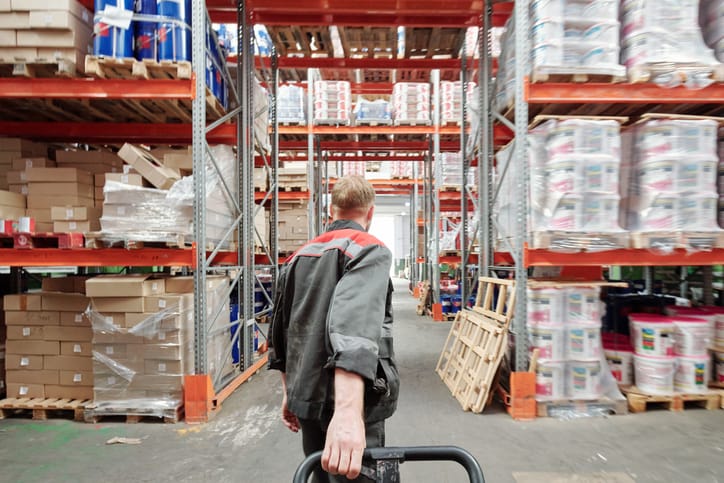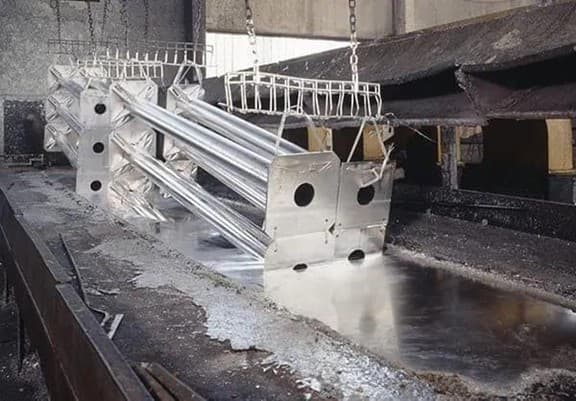
Industrial storage has become a linchpin of modern industries, supporting critical functions across sectors like e-commerce, manufacturing, and logistics. The demand for efficient storage solutions continues to rise, driven by technological advancements, urbanization, and the shift toward more sustainable practices. Businesses are embracing innovations such as automation, robotics, and AI to enhance storage capabilities and meet consumer expectations for faster delivery and seamless order fulfillment.
At the same time, The ProLift Rigging Company highlights how the industrial real estate market is reshaping urban landscapes with multi-story warehouses and sprawling suburban logistics centers. Emerging trends in sustainability and resilient supply chains are paving the way for a greener and more adaptive future. These developments present lucrative opportunities for businesses and investors who can strategically navigate this rapidly evolving sector.
What is Driving the Demand for Industrial Storage?
Industrial storage has become an essential backbone for industries such as manufacturing, e-commerce, and logistics, acting as the foundation for efficient supply chains. As businesses strive to meet growing consumer demands, the need for robust storage solutions that optimize inventory management has surged. This infrastructure ensures goods are stored, processed, and delivered seamlessly across various sectors.
The rapid expansion of online shopping has expanded the requirement for warehousing and distribution spaces. Retailers and e-commerce platforms rely on these facilities to store and ship products quickly, catering to customer expectations for faster deliveries. Additionally, global supply chain processes have shifted dramatically in recent years, with companies stockpiling inventory or reshoring operations to mitigate disruptions, further amplifying demand for industrial storage.
Consumer expectations have also played a pivotal role, pushing businesses to maintain higher inventory levels and ensure product availability at all times. The shift toward direct order fulfillment and same-day delivery options has created a pressing need for advanced and accessible storage facilities.
Technological Advancements in Storage Solutions
Advancements in technology have revolutionized industrial storage, making operations faster, smarter, and more efficient. Automation has become a cornerstone of modern warehousing, reducing manual labor and improving accuracy in inventory management. Smart systems equipped with artificial intelligence enable real-time tracking, predictive maintenance, and optimized storage layouts, helping businesses cut costs and boost productivity.
Robotics play a transformative role in storage facilities, with automated guided vehicles and robotic arms handling tasks like picking, sorting, and packing. The Internet of Things (IoT) further enhances connectivity, allowing seamless communication between machines and systems. A warehouse equipped with such technologies operates as a finely tuned system, capable of adapting to fluctuating demands with minimal disruption.
Industrial Real Estate and Urban Development
The surge in demand for industrial storage has reshaped the real estate landscape, particularly in urban and suburban areas. Warehousing and distribution centers are now highly sought after, with businesses competing for strategically located properties near transportation hubs and densely populated cities. However, the limited availability of land in these regions has led to challenges such as zoning restrictions and rising property costs, prompting innovative solutions.
Multi-story warehouses have emerged as a practical alternative in space-constrained areas. These vertical facilities maximize storage capacity while minimizing land usage, making them ideal for urban settings. At the same time, suburban regions are experiencing a boom in industrial real estate development, where larger plots of land allow for sprawling logistics centers.
The strategic placement of these facilities near major highways and ports is further enhancing their operational efficiency. Balancing these developments with sustainable urban planning remains a pressing consideration, as communities navigate the trade-offs between industrial growth and environmental impact.
Sustainability in Industrial Storage
Sustainable practices are becoming a cornerstone of industrial storage as companies recognize the need to minimize their environmental footprint. Warehouses are increasingly integrating renewable energy sources, such as solar panels, to power their operations, reducing dependence on traditional energy grids.
Along with energy considerations, the use of eco-friendly materials in construction is gaining traction. Facilities are being built with recycled steel, low-emission concrete, and other green materials that reduce environmental impact. Moreover, energy-efficient lighting systems and advanced insulation technologies are helping warehouses maintain optimal conditions while consuming less energy. Water recycling systems and rainwater harvesting initiatives are also being incorporated to reduce resource wastage.
Opportunities for Businesses and Investors
The rising demand for industrial storage has created a wealth of opportunities for companies and investors alike. Businesses that adapt quickly to the needs of the market can gain a competitive edge, whether by leveraging technology or strategically expanding their storage networks.
Real estate investors, on the other hand, are capitalizing on the inflated value of industrial properties, particularly in areas with limited warehouse availability. Urban and suburban regions are proving to be lucrative hotspots as businesses seek proximity to customers and transportation infrastructure. By focusing on sustainable and innovative designs, investors can attract tenants looking for modern, eco-conscious facilities.


